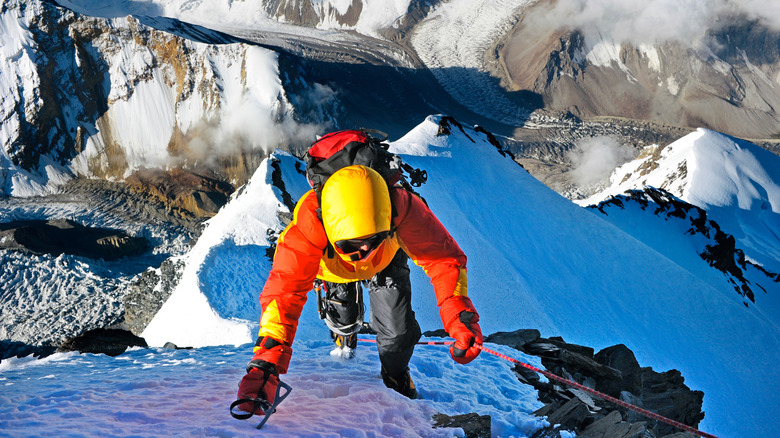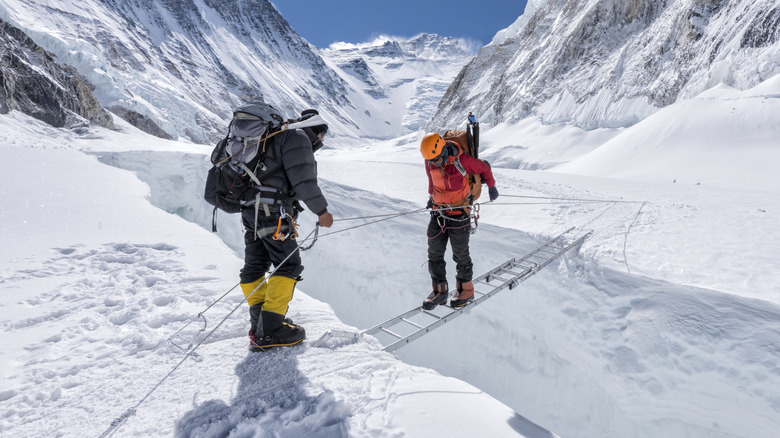One Of The Most Unexpected, Life-Threatening Dangers You'll Face When Climbing Mt. Everest
Mount Everest is one deadly mountain, and there are plenty of ways the tallest summit in the world can take down a climber. Ever since Sir Edmund Hillary became the first documented climber to reach its peak in 1953, more than 7,000 people have stood at the highest point on Earth. This number is impressive, but we must also remember that more than 300 people have died while attempting the climb.
Many of the dangers are well known: Oxygen deprivation in the upper reaches typically leads to disorientation and poor judgment, while climbers can suffer cerebral edema (or the swelling of the brain) and blood clots, among other life-threatening conditions. There's also a risk of avalanches, storms, dehydration, frostbite, falling from great heights, and — as the world was horrified to discover in 2015 — devastating earthquakes. The base camp alone is about 17,600 feet above sea level, higher than any mountain in the contiguous United States. Even arriving in the general vicinity requires you to fly into the world's most dangerous airport, perched high in the Himalayas. Given all the hazards that await, it's amazing anyone actually survives an expedition to the top.
However, one of the most fearsome dangers is the ground itself: the Khumbu Icefall is like a vast, frozen river that pours down the route's lower section. Birthed by the sprawling Khumbu glacier, the icefall is an ever-shifting labyrinth of melting, cracking ice chunks. Some parts may look flat and stable, but this white blanket is hundreds of feet thick — and climbers could easily fall through the crust, vanishing into secret crevasses. Its unpredictable nature makes Khumbu the mountain's most frightening segment, and climbers must traverse it not once but twice.
Bracing yourself for the Khumbu icefall
Anyone attempting to climb Mount Everest will learn early on about the perils of the Khumbu Icefall. This stretch is always dangerous, and alpinists have described "ice towers," known as seracs, that thrust like high rises out of the glacial mess. Humans can feel pretty puny around these rock-hard pillars, and the cracks and fissures between them can be just as unnerving. For 2,000 vertical feet, climbers must watch every step, hooking into their belay lines like their lives depend on it (because they do).
You don't finish this section until you're a full 19,500 feet above sea level. From there, you approach the "death zone" (26,200 feet and higher), which is so called for its debilitatingly thin air. On the way back, climbers have to cross this entire stretch a second time. These are just some of the hair-raising — yet fascinating — facts about Mount Everest.
Still, when climbing the world's highest mountain, nobody goes it alone. Everest climbers work in teams, who all work together to make the summit possible. Meanwhile, the government of Nepal recently passed a law requiring all climbers to have guides, a life-saving key to successfully summiting. Any guide working in this part of the Himalayas is well versed in Khumbu's (literal) pitfalls. Climbers who can afford to attempt Everest and have secured the necessary permits will train extensively for Khumbu's unique topography, and porters will carry all necessary equipment, including ropes, harnesses, and ladders, to ensure that no one accidentally falls into the abyss.

